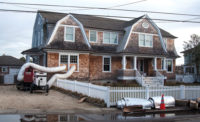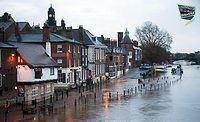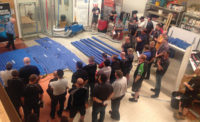Heat energy is used throughout many aspects of our daily lives, whether you are boiling a kettle, drying your clothes or using a hair dryer. Let’s take the example of a domestic clothes dryer and expand on it a little further. You place a wet material, your clothes, into the drum of the machine and turn it on. Magically you come back an hour later and the clothes are warm, dry and the water is nowhere to be seen. Now you are wondering how the machine removed all that water from a saturated material in an hour.
When you turn on your clothes dryer, the machine starts to rotate the drum containing the wet load and a fan starts drawing in a controlled stream of dry, ambient air into the system. This ambient air passes over an electric heating element and picks up heat energy from the coils, in doing so the temperature of the air is significantly increased and therefore the %RH of the air reduces substantially; the air entering the drum is now ‘thirsty’ and has significant capacity to take on water vapor.
Your saturated clothes are now being exposed to warm, dry, low %RH air; the fabric of the material is continuously heating up and so is the bound water within that fabric. The bound water is becoming more and more energetic as it adsorbs heat from within the drum of the machine. Congratulations, evaporation is now taking place!
Why does heat promote evaporation?
If you heat or cool water sufficiently, a phase change occurs. When you heat water, you are simply adding energy to the water. When you cool water, you are taking energy away. Evaporation is dependent on the phase change of water from a liquid to a gas; this process requires absorption of energy, the heat of vaporization.
What is Diffusion?
Diffusion, in drying terms, is the rate at which moisture transports through materials in a property. For example, the diffusion rate of water in concrete is significantly slower than the diffusion rate of water within a piece of wood; this is due to the physical properties of the material.
Introducing heat into the drying environment makes the water molecules more energetic and speeds up the diffusion rate of water through a given material, accelerating the evaporative process. The faster you can get the water to the surface to evaporate, the quicker you can dry.
Think about your existing drying systems
When the coils of your refrigerant dehumidifier freeze up, how do you resolve the problem? A hot-gas defrost adds heat energy in the area that is frozen and enables the phase change from a solid (Ice) to a liquid (Water).
When using your desiccant dehumidifier, the rotor rotates and adsorbs water from the passing moisture-laden air. The moisture captured within the rotor is then released from the desiccant material and purged to outside via a hose. The release of this bound water is enabled by the direct application of heated air to the regeneration section of the rotor.
Back to the clothes dryer...
As water evaporates from the wet clothes into the air within the drum, the specific humidity (GPK/GPP) within the machine increases; the warm, wet air must now be purged from the system to allow for further evaporation to take place. The dryer vents this warm, moisture-laden air to outside via a hose and external vent, whilst at the same time bringing in ambient air to replenish the volume of air being exhausted. This process continues until the water is removed from the material and it is determined to be dry by the user.
Systems such as these have been fine tuned to deliver the highest level of drying efficiency possible. They have sophisticated electronic control systems which are reliant on continual evaluation of the drying environment. Just because a system provides heat it doesn’t mean it is just a heater.
So, can you use heat to dry a water damaged property?
The simple answer is yes, you can. In simplistic terms, the drying of a water damaged property can be compared with the drying of saturated clothes placed in a tumble dryer.
• Each material is different and needs careful attention. Some materials need to be dried slowly at lower temperatures and others can be dried more aggressively.
• The drying process needs careful monitoring; you would not leave your clothes drying for hours on end as you would not over-dry a structural material.
• The evaporation process requires the introduction of additional energy into the environment; it does not matter whether this is a concrete slab or a delicate silk shirt.
• Overheating can damage your clothes - you use the controlled heat of a clothes dryer. Therefore, you need to use controlled heat when drying a building.
Target Drying & DBK Group
The DBK Drymatic System has been designed to provide water damage technicians with a tool that they can use to take advantage of the controlled application of heat within their structural drying process. At DBK, we have a wealth of experience in thermal control solutions and we have used this knowledge to innovate and develop revolutionary new drying systems for the damage management industry. Additionally, we have used our expertise to support our customers and competitors who manufacture drying equipment; maximizing their performance and efficiency.
DBK strongly advocates the use of target drying within a restoration project. Why use energy drying areas that do not need drying when you can focus on the areas that need most attention? DBK developed the Drymatic Boost Box as an auxiliary heat source for use with wall and floor systems; it can also be used in conjunction with refrigerant dehumidifiers when used in colder climates.
Want to read more? Click here!






Report Abusive Comment